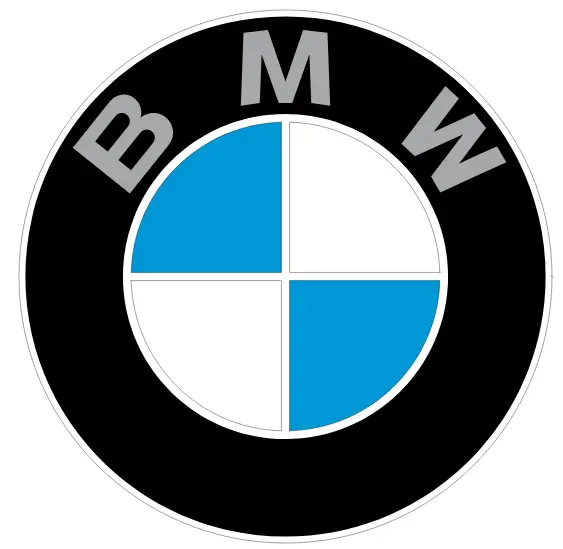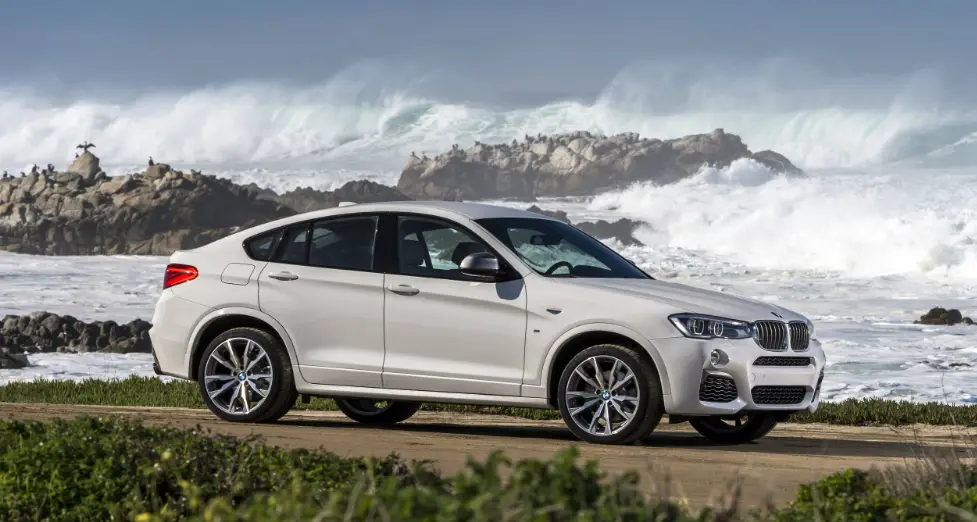
2017 BMW X4 Owner’s Manual
A luxury compact crossover SUV called the BMW X4 was unveiled by the German carmaker BMW in 2014. Because of its SUV capabilities paired with coupe-like design, it is referred known as a Sports Activity Coupe (SAC). The X4 is based on the BMW X3, although it has a sportier look and a more sloping roofline. The first-generation BMW X4 went on sale as a 2015 model after receiving its formal debut at the 2014 New York International Auto Show. It was positioned in BMW’s SUV portfolio between the smaller BMW X3 and the larger BMW X5. The BMW X4 and its larger sibling, the BMW X6, share a lot of aesthetic features. It has a brash and muscular front fascia with a kidney grille that is distinctive to BMW, as well as sharp headlamps and a sculpted hood. The X4’s coupe-like roofline is highlighted in the side profile, giving it a more dynamic and sporty appearance. Dual exhaust ports and large taillights define the back end. The BMW X4’s interior provides an opulent, driver-focused setting. It has a variety of comfort and convenience features, modern technology, and high-quality materials. Five people can sit in the supportive, comfy seats of the X4. The sloping roofline marginally reduces the cargo room compared to the X3, but it still provides a respectable amount of storage space. The BMW X4 features both gasoline and diesel engine options, giving customers a variety of performance options. Market-specific variations exist in the powertrain selection, however four-cylinder and six-cylinder turbocharged engines are frequently offered.
Brake force display
Concept
Additional brake lamps indicate emergency braking to the traffic behind. This can reduce the risk of a rear-end collision.
General information
- During normal brake application, the outer brake lights light up.
- During heavy brake application, the inner brake lights additionally light up.
Driving stability control systems
Vehicle features and options
This chapter describes all standard, country-specific, and optional features offered by the series. It also describes features that are not necessarily available in your vehicle, e.g., due to the selected options or country versions. This also applies to safety-related functions and systems. When using these functions and systems, the applicable country provisions must be observed.
Anti-lock Braking System ABS
- ABS prevents the locking of the wheels during braking.
- The vehicle maintains its steering power even during full brake applications, thus increasing active safety.
- ABS is operational every time you start the engine.
Brake assistant
- When you apply the brakes rapidly, this system automatically produces the greatest possible braking force boost. It reduces the braking distance to a minimum during an emergency stop. This system utilizes all of the benefits provided by ABS.
- Do not reduce the pressure on the brake pedal for the duration of the emergency stop.
DSC Dynamic Stability Control
- Concept: Within the physical limits, the system helps to keep the vehicle on a steady course by reducing engine speed and by applying brakes to the individual wheels.
General information
Dynamic Stability Control detects, e.g., the following unstable driving conditions:
- Fishtailing, which can lead to oversteering.
- Loss of traction of the front wheels, which can lead to understeering.
Dynamic Traction Control DTC, refer to page 128, is a version of the DSC where for‐ward momentum is optimized.
Safety information
WARNING
- The system does not release from the personal responsibility to correctly assess the traffic situation. Based on the limits of the system, it cannot independently react to all traffic situations. There is a risk of an accident. Adjust the driving style to the traffic conditions.
- Watch traffic closely and actively intervene in the respective situations.
- When driving with a roof load, e.g., with a roof-mounted luggage rack, driving safety may not be ensured in driving-critical situations due to the elevated center of gravity. There is a risk of accidents or risk of property damage. Do not deactivate Dynamic Stability Control DSC when driving with roof load.
Things to remember when driving
Vehicle features and options
This chapter describes all standard, country-specific and optional features offered with the series. It also describes features that are not necessarily available in your vehicle, e. g., due to the selected options or country versions. This also applies to safety-related functions and systems. When using these functions and systems, the applicable country provisions must be observed.
Breaking-in period
General information
Moving parts need time to adjust to one another (break-in time). The following instructions will help you to achieve a long vehicle life and good efficiency. During break-in, do not use the Launch Control.
Safety information
WARNING: Due to new parts and components, safety and driver assistance systems can react with a delay. There is a risk of an accident. After installing new parts or with a new vehicle, drive conservatively and intervene early if necessary. Observe the break-in procedures of the respective parts and components.
Engine, transmission, and axle drive
Up to 1,200 miles/2,000 km
Do not exceed the maximum engine and road speed:
- For gasoline engine 4,500 rpm and 100 mph/160 km/h.
- Avoid full load or kick down under all circumstances.
From 1,200 miles/2,000 km
- The engine and vehicle speed can gradually be increased.
Tires
- Tire traction is not optimal due to manufacturing circumstances when tires are brand-new; they achieve their full traction potential after a break-in time.
- Drive conservatively for the first 200 miles/300 km.
Brake system
Brakes require an initial break-in period of approx. 300 miles/500 km to achieve optimal performance between brake discs and brake pads. Drive moderately during this break-in period.
Following part replacement
The same break-in procedures should be observed if any of the components above mentioned have to be renewed in the course of the vehicle’s operating life.
Driving on poor roads
The vehicle combines all-wheel drive with the advantages of a normal automobile.
NOTE
Objects in unpaved areas, e.g., stones or branches, can damage the vehicle. There is a risk of property damage. Do not drive on unpaved terrain.
For your own safety, for the safety of passengers and of the vehicle, heed the following points:
- Become familiar with the vehicle before starting a trip; do not take risks while driving.
- Adjust the speed to the road surface conditions. The steeper and more uneven the road surface, the slower the speed should be.
- When driving on steep uphill or downhill grades: add engine oil and coolant up to near the MAX mark. Uphill and downhill grades can be traveled up to no more than 50 %.
- On steep downhill grades, use Hill Descent Control HDC.
- Starting out is possible on uphill grades up to 30 %. The permissible side tilt is 30 %.
- Avoid the chassis bottom coming in contact with the ground.
- The ground clearance is no more than 7.8 inches/20 cm and can vary according to the vehicle’s load.
- When the wheels continue to spin, depress the accelerator so that driving stability control systems can distribute the driving force to the wheels. Activate DTC Dynamic Traction Control if available.
After a trip on poor roads
After a trip on poor roads, check wheels and tires for damage to maintain driving safety. Clear heavy soiling from the body.
General driving notes
Closing the tailgate
WARNING: An open tailgate protrudes from the vehicle and can endanger occupants and other traffic participants or damage the vehicle in the event of an accident, braking, or evasive maneuvers. In addition, exhaust fumes may enter the vehicle interior. There is a risk of injury or risk of property damage. Do not drive with the tailgate open.
If driving with the tailgate open cannot be avoided:
- Close all windows and the glass sunroof.
- Greatly increase the airflow from the vents.
- Drive moderately.
Hot exhaust system
WARNING: During driving operation, high temperatures can occur underneath the vehicle body, e.g., caused by the exhaust gas system. If combustible materials, such as leaves or grass, come in contact with hot parts of the exhaust gas system, these materials can ignite. There is a risk of injury or risk of property damage. Do not remove the heat shields installed and never apply undercoating to them. Make sure that no combustible materials can come in contact with hot vehicle parts in driving operation, idle or during parking. Do not touch the hot exhaust system.
FAQ’s
The starting price of the 2017 BMW X4 varies depending on the specific trim level and optional features, but it typically starts around $45,000 USD.
The 2017 BMW X4 offers a range of engine options, including a 2.0-liter turbocharged four-cylinder engine and a 3.0-liter turbocharged inline-six engine.
Yes, the 2017 BMW X4 comes standard with BMW’s xDrive all-wheel drive system, which provides enhanced traction and stability in various driving conditions.
The 2017 BMW X4 can comfortably seat up to five passengers.
The cargo space in the 2017 BMW X4 is 17.7 cubic feet behind the rear seats, and it can be expanded to 49.4 cubic feet when the rear seats are folded down.
Key standard features in the 2017 BMW X4 may include leatherette upholstery, a power liftgate, dual-zone automatic climate control, Bluetooth connectivity, a rearview camera, and a panoramic sunroof.
Yes, there are various packages and options available for the 2017 BMW X4, including the M Sport package, Technology package, Driver Assistance package, and Premium package, among others. These packages offer additional features and customization options.
The fuel efficiency of the 2017 BMW X4 varies depending on the engine and drivetrain configuration. On average, it achieves around 20-23 MPG in city driving and 27-28 MPG on the highway.
The 2017 BMW X4 comes equipped with various safety features, such as antilock brakes, stability control, traction control, multiple airbags, a rearview camera, and optional driver-assistance technologies like forward collision warning, lane departure warning, and blind-spot monitoring.
The 2017 BMW X4 does not come standard with Apple CarPlay and Android Auto compatibility. However, it may be available as an optional feature or can be retrofitted through BMW’s ConnectedDrive services.
The 2017 BMW X4 typically comes with a four-year/50,000-mile limited warranty, which covers the vehicle for defects and repairs during that period.
Yes, the 2017 BMW X4 is capable of towing a trailer, with a maximum towing capacity of up to 3,500 pounds when properly equipped.
The 2017 BMW X4 requires premium unleaded gasoline (91 octane or higher) for optimal performance and efficiency.
While the 2017 BMW X4 offers all-wheel drive and some off-road capabilities, it is primarily designed for on-road driving and excels in providing a sporty driving experience on paved roads.
The 2017 BMW X4 competes with other luxury compact SUVs, such as the Mercedes-Benz GLC Coupe, Porsche Macan, and Audi Q5. It offers a unique blend of coupe-like styling, sporty performance, and luxury features, providing an attractive option for those seeking a more dynamic driving experience in this segment.

